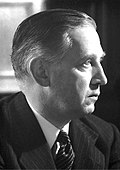| IET Faraday Medal | |
|---|---|
 Front side of the medal | |
| Awarded for | Awarded either for notable scientific or industrial achievement in engineering or for conspicuous service rendered to the advancement of science, engineering and technology or for lifetime achievement in science, engineering or technology. |
| Sponsored by | Institution of Engineering and Technology (IET) and the Institution of Electrical Engineers (IEE) |
| Date | 1922 |
| Country | |
| Website | Faraday Medal recipients |
 Reverse side of the medal | |
| Precedence | |
| Next (higher) | None |
| Next (lower) | Mountbatten Medal |
The Faraday Medal is a top-tier international medal awarded by the UK Institution of Engineering and Technology (IET) (previously known as the Institution of Electrical Engineers (IEE)). [1] [2] [3] As one of the world's foremost awards in engineering and the most prestigious in electrical engineering, it is part of the IET Achievement Medals collection of awards. [4] The medal is named after the British physicist Michael Faraday, the father of electromagnetism.












